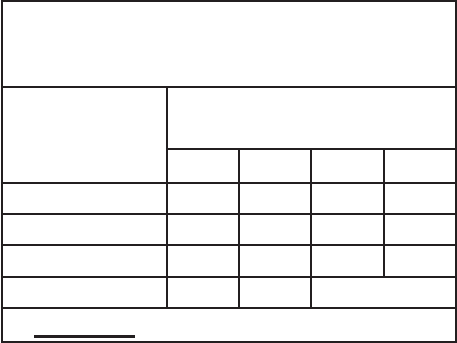
Page 4
For technical questions, please call 1-800-444-3353.
SKU 67501/68740
operate it. A compressor is dangerous in the
hands of untrained users.
d. Maintain the compressor. Keep the compressor
clean for better and safer performance.
Following instructions for lubricating and
changing accessories. Keep dry, clean and free
from oil and grease. Check for misalignment
or binding of moving parts, breakage of parts
and any other condition that may affect the
compressor’s operation. If damaged, have
the compressor repaired before use. Many
accidents are caused by a poorly maintained
compressor.
e. Use the compressor in accordance with these
instructions, taking into account the working
conditions and the work to be performed.
Use of the compressor for operations different
from those intended could result in a hazardous
situation.
5. Service
a. Have your compressor serviced by a qualied
repair person using only identical replacement
parts. This will ensure that the safety of the
compressor is maintained.
Air Compressor Safety Warnings
1. Risk of re or explosion - Do not spray ammable
liquid in a conned area or towards a hot surface.
Spray area must be well-ventilated. Do not smoke
while spraying or spray where spark or ame is
present. Arcing parts - Keep compressor at least
20 feet away from explosive vapors, such as when
spraying with a spray gun.
2. Risk of bursting - Do not adjust regulator higher
than maximum stated pressure of attachment.
3. Risk of injury - Do not direct air stream at people or
animals.
4. To reduce the risk of electric shock, do not expose
to rain. Store indoors.
5. Wear ANSI-approved safety goggles during use.
6. Do not use to supply breathing air.
7. Do not use the air hose to move the compressor.
8. Drain Tank daily and after use. Internal rust causes
tank failure and explosion.
9. Add correct amount of compressor oil before rst
use and every use. Operating with low or no oil
causes permanent damage and voids warranty.
10. Do not remove the Pressure Switch (54) cover or
adjust the internal components.
11. Do not use the air hose to move the compressor.
12. Compressor head gets hot during operation. Do
not touch it or allow children nearby during or
immediately following operation.
13. Release the pressure in the storage tank before
moving.
14. The use of accessories or attachments not
recommended by the manufacturer may result in a
risk of injury to persons.
15. All air line components, including hoses, pipe,
connectors, lters, etc., must be rated for a
minimum working pressure of 150 PSI, or 150%
of the maximum system pressure, whichever is
greater.
16. USE OF AN EXTENSION CORD IS NOT
RECOMMENDED. If you choose to use an
extension cord, use the following guidelines:
RECOMMENDED MINIMUM WIRE
GAUGE FOR EXTENSION CORDS
(120 VOLT)
NAMEPLATE
AMPERES
(at full load)
EXTENSION CORD
LENGTH
25’ 50’ 100’ 150’
0 – 6 18 16 16 14
6.1 – 10 18 16 14 12
10.1 – 12 16 16 14 12
12.1 – 16 14 12 Do not use.
TABLE A
a. Make sure your extension cord is in good
condition.
b. Be sure to use an extension cord which is heavy
enough to carry the current your product will
draw. An undersized cord will cause a drop in line
voltage resulting in loss of power and overheating.
Table A shows the correct size to use depending
on cord length and nameplate ampere rating. If in
doubt, use the next heavier gauge. The smaller
the gauge number, the heavier the cord.
17. Industrial applications must follow OSHA
guidelines.
18. Maintain labels and nameplates on the compressor.
These carry important safety information. If
unreadable or missing, contact Harbor Freight
Tools for a replacement.
19. This product is not a toy. Keep it out of reach of
children.
20. Operate unit on level surface. Check oil level daily
and ll to marked level if needed.
21. People with pacemakers should consult their
physician(s) before use. Electromagnetic elds in
close proximity to heart pacemaker could cause
pacemaker interference or pacemaker failure.


















